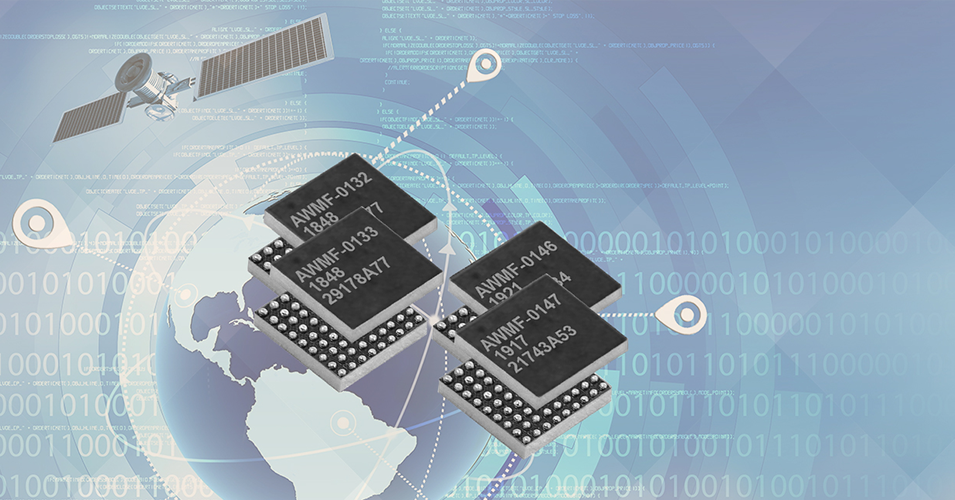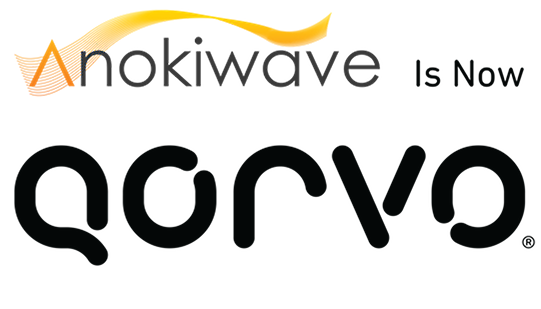Enabling High Capacity Satellite System Terminals
 |
Assaf Toledano |
|---|---|
|
|
|

The Growing Satellite Market
Geostationary (GEO) Systems
With the growing need for ubiquitous connectivity, the satellite communications industry is poised for explosive growth with multiple high capacity systems either already on-orbit or planned for the near future. There are on-orbit geostationary systems like ViaSat-1 and ViaSat-2 that offer capacities of 140 GBPS and 300 GBPS, respectively. ViaSat-3 has also been recently announced and will offer 1 TBPS capacity which in one satellite will be greater than the rest of the GEO satellite world combined. Other GEO satellites include Jupiter-1/Echostar-17 and Jupiter-2/Echostar-19 which offer capacities of 100 GBPS and 220 GBPS, respectively, with Jupiter-3/Echostar-27 launched in July 2023 with 500 GBPS capacity.
Low Earth Orbit (LEO) Systems
However, the GEO satellites are not the only ones adding significant capacity to the space industry. There are multiple low earth orbit satellite systems being designed including Telesat, OneWeb, SpaceX, Iridium, and LeoSat. These systems have constellations circling the earth while providing coverage to parts of the planet that never before received satellite service. The sizes of these constellations vary from 100’s to 1000’s of satellites so the aggregate capacity of these constellations will be enormous. Lately, SpaceX/Starlink was approved by the FCC to launch an extra 7,000 internet beaming satellites in addition to the 4,000 that have already been approved. This will bring a total of 12,000 satellites to their constellation. These LEO satellites will be in addition to the OneWeb constellation which is planning for approximately 600 more satellites. Telesat will operate 292 LEO satellites with the option to grow to 512 LEO satellites. Other companies might have similar views and will be launching satellites as well. These LEO satellite systems will cover global internet broadband service for individual customers. The plan of these companies is to provide broadband access to millions of potential remote users that do not have an access to it today.
Medium Earth Orbit (MEO) Systems
In the medium earth orbit systems, one finds O3b which is expanding its constellation of 50 deg latitude equatorial orbit satellites from 16 to 42 satellites with the newer satellites to be deployed in inclined orbits that will provide service to the poles. Its newest 7 satellites will offer a combined 10 TBPS of capacity alone.
Pros and cons of LEO, MEO and GEO Systems
These three different orbit satellite systems will provide full coverage for our everyday needs. Each orbit system has its own pros and cons but together they work as a whole. The GEO arc is located the farthest from earth at about 35,800 km directly above the equator. It has the advantage of staying in one stationary position relative to earth and covers a bigger geographical area with less satellites. However, the farther the distance, the longer the latency and for GEO it can be about 600 to 800 msec. This technology is arguably best for TV’s, radios, and weather communications, and broadcast services. In comparison, the LEO satellites orbit 500 km to 1,500 km from earth. These satellites are much smaller, cost less to manufacture and to launch. Their life cycle is shorter and in order to have global coverage, there is a need for many of them. These satellites are moving at a much faster pace because of their proximity to earth and a larger number of them will be required to cover the entire earth. LEO satellites spend a lot of time over the ocean which makes them less efficient but does provide better communication cover for boats and ships that are far from the shore. Communication with LEO/MEO satellites tend to be more complicated compared to GEO systems as the ground stations need to track multiple satellites and switch between satellites during hand-offs. Another big advantage that LEO satellites offer in comparison to the GEO is the latency. The latency is much shorter and measures from 30 to 50 msec which makes it very attractive to gaming, video streaming, audio and fast internet communication.
The MEO satellites orbit above the earth at about 5000 to 12000 km altitude with latencies of 125 to 250 msec which make them very good for GPS use and for services that can tolerate moderate propagation delays.
This huge amount of capacity will give rise to unprecedented numbers of user terminals, most of which must have steerable antenna technology. Steerable antennas are required when either the satellite or the satellite terminal is in motion. Thus LEO and MEO systems require steerable antennas for both fixed and mobile users. Similarly, GEO systems require steerable antennas for mobile users or even for auto-pointing applications where the antenna beam can self-point at a GEO satellite for highest throughput performance.
Traditionally global high-capacity satellite bands operate at 10.7-12.75 GHz or 17.7-20.2 GHz on the downlinks and 13.75-14.5 GHz and 27.5-30.0 GHz on the uplinks. So how can the satellite industry mass produce high frequency active antennas with steerable beams in sufficient volumes to leverage the significant space resources being deployed? What is needed are antennas that are high performance, low profile, manufacturable using only 2D manufacturing methods, scalable in size to meet the various use cases from large, high throughput terminals to smaller, and lower throughput terminals.
Use of Electronically Steered Active Phased Array Antennas in SATCOM
Phased array antennas can solve many of these challenges. Phased array antennas are an array of radiating elements that are fed varying phase and amplitude information to form a beam in a given direction. The beam is thus steered electronically with no moving parts. Without the need for bulky mechanical gimbals this type of antenna is smaller, more reliable, and less costly to maintain.
For highest performance in any radio system the power amplifier and low noise amplifier need to be placed as close to the antenna as possible to minimize front end feed loss. In phased array antennas this means that the Tx/Rx plus beam steering functions need to be placed right at the radiating element. Since the distance between radiating elements in the array (the lattice) is typically one-half wavelength, this means the real estate available for the phased array antenna electronics is quite limited especially at higher frequencies where the wavelengths are very short. The only monolithic technology that can provide sufficient integration of the requisite RF, analog, and digital functions is silicon. Fortunately, Moore’s Law has allowed silicon to advance to the point where III-V semiconductor components like GaAs are no longer needed in the array resulting in major cost savings and simpler construction.
Typical construction of a planar phased array is to use a multi-layer printed circuit board (PCB) with antenna elements printed in metal on one side of the PCB and the silicon control electronics on the opposite side of the board. Inner layers of the PCB provide beam-forming networks, DC (direct current) voltage, and control signal routing. This type of construction allows simple surface mount assembly using pick and place machines and IR reflow. It is important to have optimized layout from matching, loss and power perspective to achieve the best performance. Anokiwave’s products are designed to enable optimized layout with minimum board cost and complexity.
Planar phased array antennas are scalable in size allowing larger antennas to support higher G/T or EIRP applications and smaller antennas to support lower G/T or EIRP applications. The silicon ICs that reside within the antenna lattice are just stepped and repeated across the array regardless of the size of the array.
Anokiwave ICs Enabling Next Generation of Active Phased Array Flat Panels
Anokiwave recently announced its second generation of SATCOM ICs designed specifically for high volume, low cost phased array terminals as described herein. These parts are designed for FDD (Frequency Division Duplex) operation covering global SATCOM Ku, K, and Ka bands. Each IC in the family supports four dual polarization radiating elements with full polarization flexibility. Each channel has its own individual control of phase and gain for maximum flexibility. The gain control per element also allows the customers to adjust the gain per element to achieve a desired side lobe level. There is also power detector circuitry with an ADC (Analog to Digital Converter) on each TX element to provide an estimate of transmit output power. These ICs operate from a single supply of 1.2v and offer high gain, low noise figure, and excellent DC efficiency. Additional features include gain compensation over temperature, temperature reporting and zero calibration for the array. All of these features come in a small package of 4.4 x 3.6 mm WLCSP (Wafer Level Chip Scale Package) for easy installation in planar phased array antennas.
Anokiwave’s zero calibration (ZERO-CAL®) technology removes the need for array calibration which reduces customer test time, complexity and cost. The ICs also offer fast beam steering to enable rapid angular tracking in mobile environments and fast beam hand-offs between LEO/MEO satellites. The temperature compensation is designed to allow constant gain performance over the full range of temperature range of -40 degC to +85 degC. Finally, the ICs provide telemetry to the host system enabling pro-active maintenance by the system operator reducing expensive truck rolls.
Anokiwave’s SATCOM ICs utilize 300mm CMOS Silicon ensuring perfect combination of performance and low cost that truly make commercialization of Active Electronically Steered Antennas for SATCOM a reality.
Conclusion
Anokiwave is the only company today providing ICs in every mmW 5G, SATCOM and Radar band, thereby ensuring maximum economies of scale for true low cost and high-performance flat panel solutions. With its new K/Ka band Gen 2 SATCOM ICs Anokiwave is setting the benchmarks for high performance and low cost flat panel antennas for mass commercial deployment for LEO, MEO and GEO SATCOM ground terminals and Satellite-on-the move applications.

